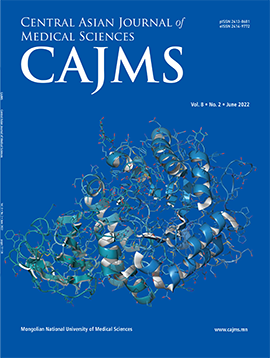Pattern and Predictors of Death in Hospitalized Adult Patients in Mongolia: A Nationwide Study
DOI:
https://doi.org/10.24079/cajms.2022.12.004Keywords:
Hospital mortality, prevalence, risk factors, gender role, residence characteristicAbstract
Objective: Hospital death patterns and predictors can illustrate the general image of certain parameters of the healthcare system. Studies related to the pattern of in-hospital deaths in Mongolia are lacking. Thus, we aimed to determine the patterns and predictors of death among hospitalized adult patients in Mongolia in 2020. Methods: Data from 86 hospitals providing inpatient care in Mongolia were used. 1795 hospital deaths from 296,083 hospital admissions were analyzed between the 1st of January and the 30th of June 2020. Results: The mean age of the participants was 56.3 ± 15.3 years, 59.4 % were male, and the median hospital stay was 2.2 days. In this study, weekend admission, urban setting, older age, and male gender were significant predictors of in-hospital death. Logistic regression analysis revealed that male gender and weekend admission were significant predictors of in-hospital death. In addition, people who died at different levels of hospitals were significantly different by residency. Conclusions: Mongolian rural people who have acute illness are rarely died in hospital settings. Weekend admission, male gender, and urban setting were independent significant predictors while between-subject-effect of male gender and urban setting was highest on in-hospital death.
Downloads
262
Downloads
Published
How to Cite
Issue
Section
License
Copyright (c) 2022 Mongolian National University of Medical Sciences

This work is licensed under a Creative Commons Attribution-NonCommercial 4.0 International License.




